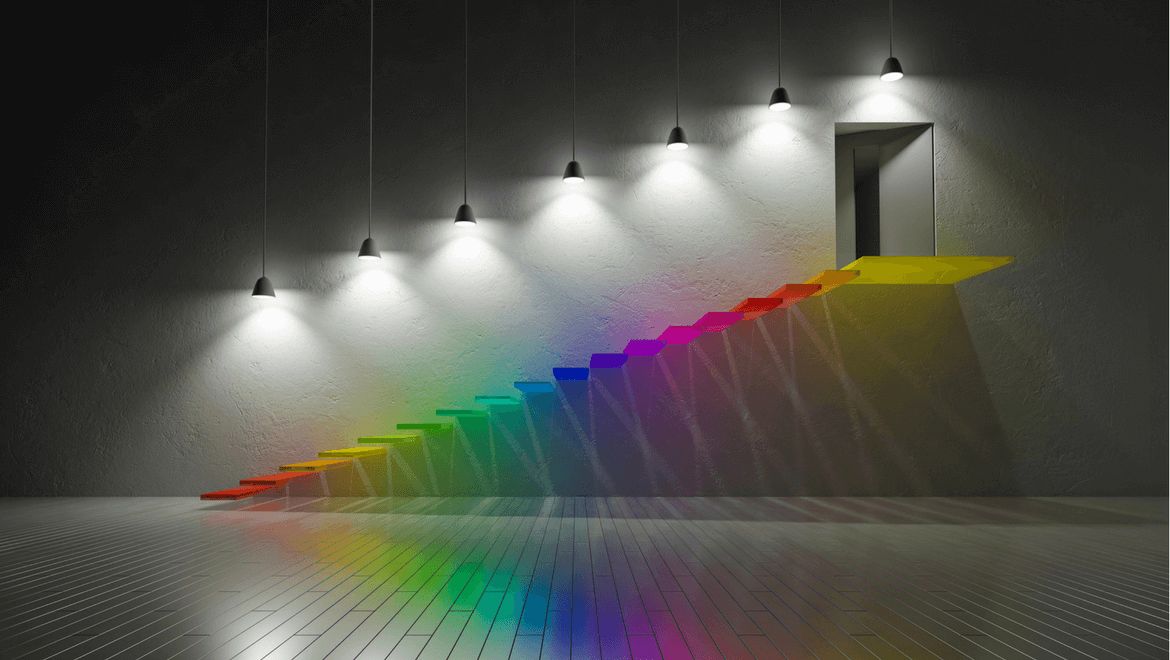
Color Rendering Index Explained
What is Color Rendering?
Color rendering defines how well a light source makes the color of an object appear to human vision relative to a high quality reference source, the sun. It further defines how well subtle variations in color shades are presented by the light source.
What is the Color Rendering Index?
Color Rendering Index, or CRI, is a scale from 0 to 100. 0 is considered poor quality. 100 is considered a perfect light source. It indicates how accurate a light source is at rendering colors when compared to how those colors appear under sunlight, or a reference light source.
The higher the CRI, the better the color rendering ability of the light. Colors appear accurate. For example, reds under CRI 95 appear crisp and bright. The same red under a CRI 50 light source appears dull and grey.
What is a good CRI Score?
Light sources with a CRI of 85 to 90 are considered good at color rendering. Light sources with a CRI of 90 or higher are excellent. For LED bulbs, the typical range of CRI options is between 70 and 98.
Is 70 CRI bad? Absolutely not. It’s perfectly acceptable to install 70 CRI lighting in many industrial applications. The light source, even at CRI 70, is higher than most traditional light sources it replaces.
Is 98 CRI great? Yes. But it comes at a cost. Higher CRI LEDs are also more expensive. You will find high CRI LEDs in movie lights. This is to ensure that color accuracy of what is being filmed or viewed is as perfect as can be.
How how does CRI relate to color temperature?
It doesn’t. When you purchase a LED bulb, you need to determine the color temperature of the bulb (how warm or cool it is). This is a measurement of Kelvin. Typical ranges for LED is between 2700K (warm) and 6500K (cool).
Then you need to look at the CRI of the bulb. This determines the quality of the light source. There is no relationship or correlation between a specific color temperature and its CRI. It’s independent of each other. Don’t assume 5000K will automatically have a better CRI than 2700K because it is a whiter light.
How is CRI Calculated?
CRI is calculated based on how well a light source renders 8 defined pastel colors. In the image below, all 15 test colors are shown. The primary colors are the 8 colors shown on the left.
Artificial light is directed at a primary color swatch. The reflected color is measured. Its this measurement of reflected color that determines how close it is to the primary light color. The more accurate the measurement to the original color swatch, the higher the CRI value.
Color Rendering Index Application Reference
| Color Rendering Index (CRI) | Typical Application |
| 20 to 40 | These lights are used in areas where color rendering is not important at all and a noticeable distortion of colors is acceptable. |
| 40 to 60 | These lights are used in areas where color rendering is not very important but a noticeable distortion of colors is not acceptable. |
| 60 to 80 | These lights are used in areas where moderate color rendering is needed. Practical applications include shop lights, warehouses, gymnasiums and parking lots. |
| 80 to 90 | These lights are used in areas where accurate color judgments are crucial or good color rendering is needed for purposes of appearance. |
| Above 90 | These lights are used in areas where accurate color rendering is vital. |

Leave a Comment